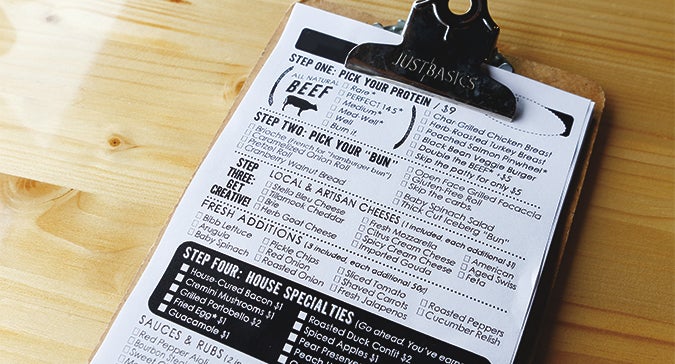Can’t afford to offer customers many choices? You can’t afford not to.
Today’s restaurant patrons, particularly millennials, expect variety, more choices, customization, and the ability to personalize their dining experience.
Those expectations have led McDonald’s and Wendy’s to test market custom burgers. Analysts say this is a response to successes at fast-casual chains like Chipotle and Subway. This is largely because they empower customers to tailor their meals from a wide selection of fresh, high-quality ingredients.
If you think you needn’t pay attention to customization because you’re not a quick-serve or fast-casual restaurant, think again, maintains Mary Chapman, Director of Product Innovation at Technomic Inc. “This is a large shift in consumer preferences, and it’s going to continue,” Chapman says. “In fact, it will only increase.”
Bonnie Riggs, Restaurant Industry Analyst for the NPD Group, concurs. “Consumers want choices in ingredients, healthy options, portion sizes, and pricing,” Riggs says. “If consumers don’t get what they want, they’ll walk.”
What does this shift in demand mean to commercial foodservice?
“Today’s customers expect you to do virtually anything they want,” says Gordon Food Service® Commercial Customer Success Director Bill Balke. “The good news is they’re willing to pay extra.”
Try these ways to add customization to your menu:
Build your own. Follow the lead of Five Guys Burgers and Fries and your neighbourhood pizza joint. Olive Garden lets patrons build a meal by choosing among multiple pastas and sauces. See if your menu lends itself to this approach, even if it’s only a salad or two.
Mix and match. Allow guests to choose meal combinations. Chili’s “Southwest Pairings” menu lets diners create two or three dishes from among 10 selections. Consider downsizing some popular items and offering them on a mix-and-match menu.
Portion sizes. Most emphasis has been on smaller portions to combat rising food prices. But big also works: bigger burgers, hot dogs, snacks, or plates for sharing … at a bigger price.
Sharing plates. Shared plates empower diners to forgo the standard appetizer-entrée-dessert formula and create a dining experience. “Sharing” doesn’t mean “small.” It’s all about bigger flavours, more variety, and expanded opportunities.
Healthy options. More customers are seeking low-fat, low-salt, vegetarian, gluten-free, grilled and other health-conscious choices. If you make healthy substitutions, be overt about it on your menu and make sure your servers communicate it.
Blurred dayparts. Some patrons want breakfast during the dinner hour, shared-plates at lunch, and snacks all day long. Can you be this flexible?
Beverages. Starbucks once boasted 87,000 drink combinations, raising the bar for beverage customization. Customers also enjoy personalized sodas, juices, teas and cocktails. This high-profit opportunity can be as simple as adding a shot of flavoured syrup to coffee, tea and mixed drinks.
Proceed with caution when it comes to adding customization
While most operators can benefit from offering expanded customization options, there are caveats to consider.
Too much choice. A Columbia University study showed that consumers can become overwhelmed by too many choices. Researchers found grocery shoppers were much more likely to purchase a jar of jam when offered six flavours rather than 24.
The wrong choice. Too many customizable offerings are driven by operator needs rather than customer desire, Riggs says. “We really need to understand what customers are looking for.”
The smart choice. Context is everything, Chapman contends, arguing customization must support an operator’s brand. If your brand is speed and consistency, should you offer customization? Some customers might be happy to wait a little longer for a burger without pickles, but those behind them may not.
It’s so important to assess about your operation’s capabilities. “Customization can be a real challenge,” Balke says. “Make sure you can deliver before it’s on your menu.”
They key is to strike the right balance between what your operation can achieve and the customization customers want. The most effective approach is to standardize ingredients and portions according to what most of your guests order. Then customize things from there.
“If the consumer has come to expect a higher level of customization from all providers, then bending whenever possible is good for business,” says Brian Warrener, Associate Professor in The Center for Food Service Management Johnson & Wales University.

























